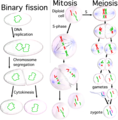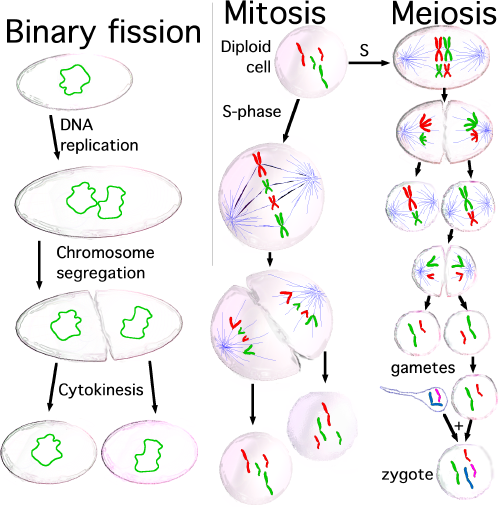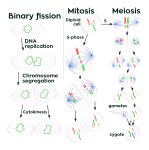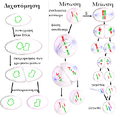Fitxategi:Three cell growth types.png
Three_cell_growth_types.png ((499 × 507 pixel, fitxategiaren tamaina: 170 KB, MIME mota: image/png))
Fitxategiaren historia
Data/orduan klik egin fitxategiak orduan zuen itxura ikusteko.
| Data/Ordua | Iruditxoa | Neurriak | Erabiltzailea | Iruzkina | |
|---|---|---|---|---|---|
| oraingoa | 22:36, 16 iraila 2005 |  | 499 × 507 (170 KB) | Saperaud~commonswiki | Three types of cell reproduction are compared: the relatively simple Binary fission and two more complicated types that either involve mitosis or meiosis. '''Binary fission'''. Organisms such as bacteria typically have a s |
Irudira dakarten loturak
Ez dago fitxategi hau darabilen orririk.
Fitxategiaren erabilera orokorra
Hurrengo beste wikiek fitxategi hau darabilte:
- en.wikipedia.org proiektuan duen erabilera
- User:JWSchmidt/Images
- Wikipedia:Wikipedians/Graphic artists
- Template:Pic of the day/Archive1
- Wikipedia:Featured picture candidates/April-2004
- Spindle checkpoint
- Portal:Biology/Featured picture
- Wikipedia:Picture of the day/June 2004
- Wikipedia:Picture of the day/May 2005
- Wikipedia:POTD/May 3, 2005
- Wikipedia:Picture of the day/May 3, 2005
- User:Cyde/Featured pictures
- Wikipedia:Featured picture candidates/delist/2013
- Wikipedia:Featured picture candidates/delist/Three cell growth types
- User:Cmboge2016/sandbox
- Template:POTD/2004-06-21
- Portal:Biology/Featured picture/21
- es.wikibooks.org proiektuan duen erabilera
- fr.wikipedia.org proiektuan duen erabilera
- ja.wikipedia.org proiektuan duen erabilera
- nn.wikipedia.org proiektuan duen erabilera
- no.wikipedia.org proiektuan duen erabilera
- pl.wikipedia.org proiektuan duen erabilera
- ru.wikipedia.org proiektuan duen erabilera
- simple.wikipedia.org proiektuan duen erabilera
- sr.wikipedia.org proiektuan duen erabilera
- sv.wikipedia.org proiektuan duen erabilera
- te.wikipedia.org proiektuan duen erabilera
- th.wikipedia.org proiektuan duen erabilera
- uk.wikipedia.org proiektuan duen erabilera
- ur.wikipedia.org proiektuan duen erabilera
- xh.wikipedia.org proiektuan duen erabilera
- zh.wikipedia.org proiektuan duen erabilera














